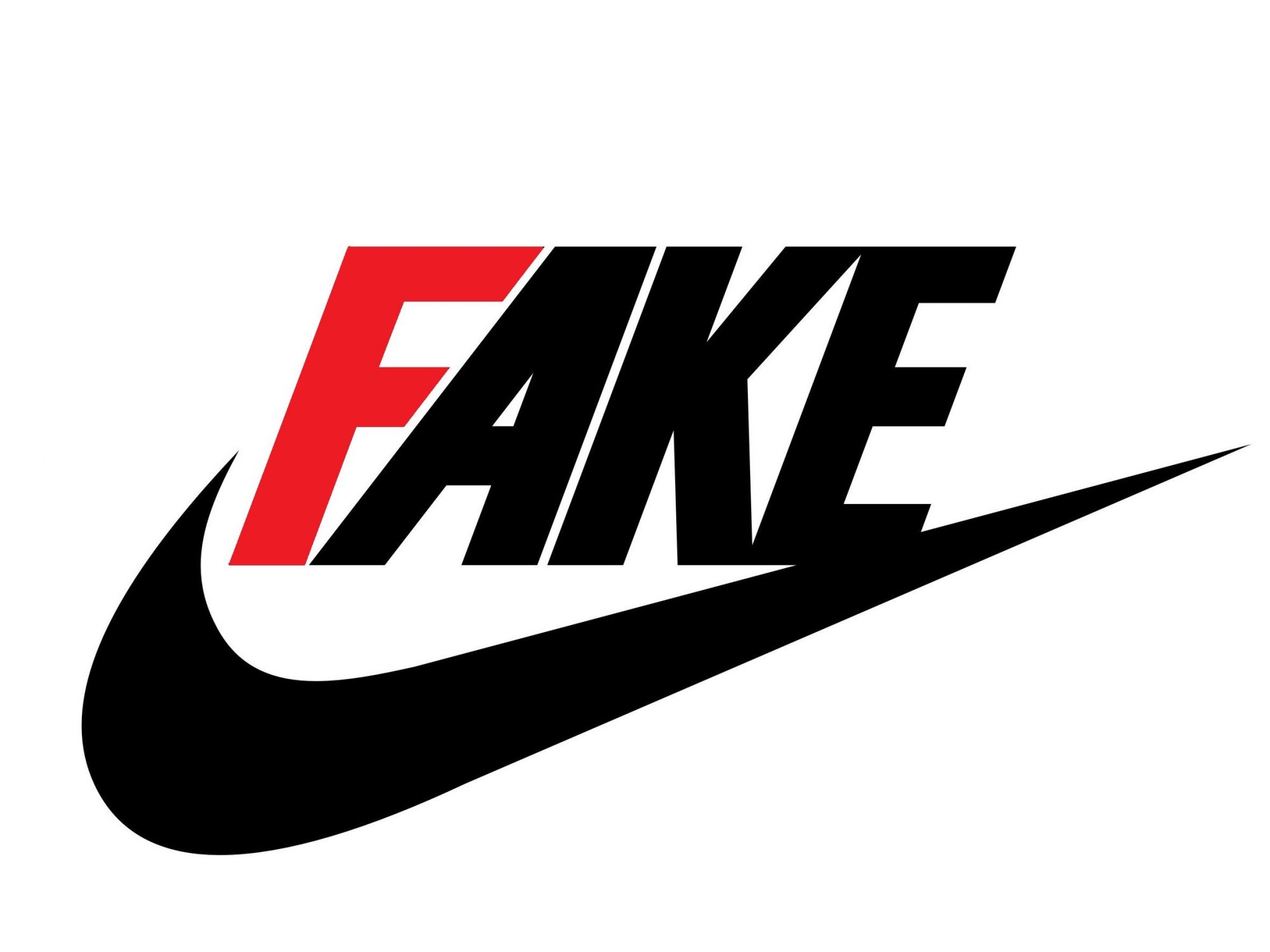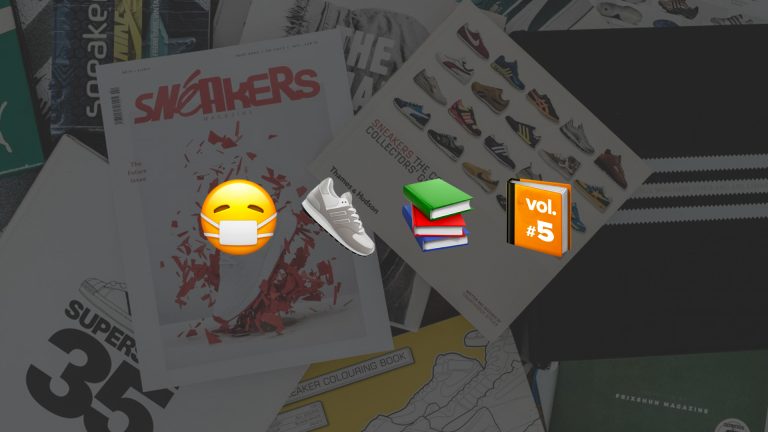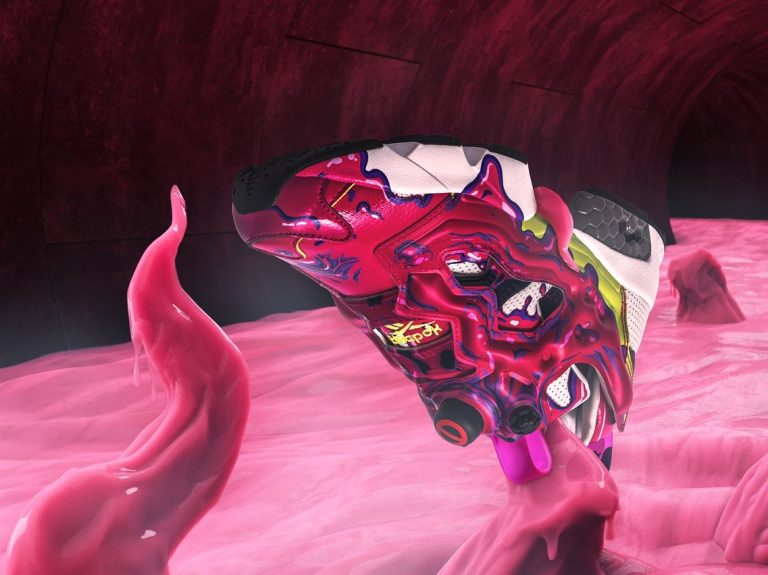Buying sneakers is often pretty expensive. The joy you get from a fresh new pair usually supresses regret over the amount spent, but a problem arises when it turns out the shoe you’ve been dreaming of isn’t the real deal. In this article, we will talk about the phenomenon that counterfeits are, focusing primarily on fake sneakers. Keep reading to find out how to recognise fake shoes, what to look out for when shopping, and other tips so you never fall prey to fakes again.
HOW TO DISTINGUISH A FAKE FROM THE ORIGINAL
Some fake sneakers can be recognized immediately, others not so easily. The number of people benefiting from the sale of fake sneakers is large, as is the range of “quality” of the fakes. When your adidas sneakers lack one of the three stripes, the Nike logo looks like a hangover or the waffle sole of your Vans are flimsier than the food itself, it’s pretty obvious you’re dealing with a fake.
But what should you do if at first glance the sneakers look identical to the ones you’ve been watching on various sneaker sites for weeks? Let’s take it step by step.
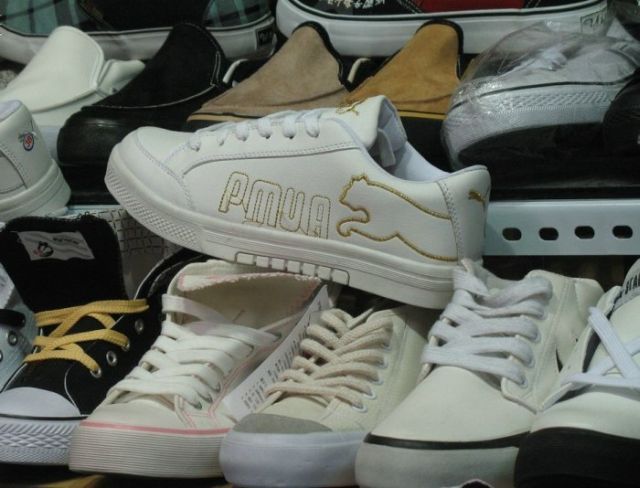
Shoe packaging
Your suspicion might grow even before your face-to-face encounter with the new pair. The box itself can be very telling of authenticity. If there are signs of damage, use or something grabs your attention at first glance, it’s best to investigate.
Your shoes arriving in a box is a good sign in and of itself. It’s much worse if your sneakers unexpectedly arrive wrapped in a few pieces of paper, or even a plastic bag. Some stores do offer shoe delivery without the box, but these are specific cases that you should be made aware of before the final click of your order.
Each box of footwear from a respected brand should contain the following information:
1. Place of manufacture
2. SKU code
3. Barcode
4. The name of the sneakers
5. Size information
In most cases, you will find all of this information on the sticker on the box. In unique cases, it could also be printed directly on the box, but this is extremely rare. It’s best to expect the information to be printed on the sticker and if it’s not to take it as an indicator of a fake box.
Fake sticker?
Even fake stickers occur. When it does, distinguishing a counterfeit is a matter of detail. Look for any signs or signals. Most brands produce their stickers with a uniform format, font and spacing. If you have any suspicions, it’s best to search the internet for what the real sticker looks like, and compare it to yours. Be sure to pay attention to inconsistencies in spacing between words or letters, as well as the differences in the details of the numbers and letters themselves. Brands take their fonts very seriously, counterfeiters do not.

Source: blog.klekt.com
SKU code
The abbreviation stands for stock keeping unit, which can be understood as the number of the stock unit. This number, sometimes containing letters, is unique for each color design of each individual model of branded shoes. Using this, you can find out on the internet whether your product matches the ordered pair. Just type the code into your search engine and the results pop up immediately.
You can find the SKU code both on the mentioned sticker on the box and on the tag inside one or both of the shoes. As I said, sometimes it consists of just numbers, sometimes it contains letters or a hyphen. Remember how the SKU code works, because this is one of the best ways to detect fake sneakers.
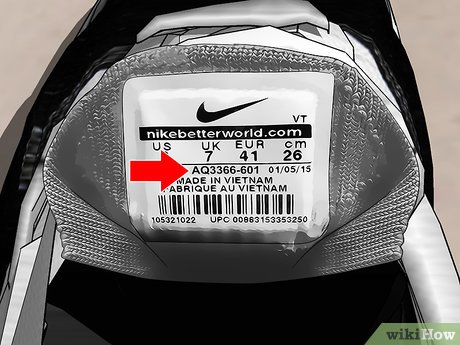
Source: wikihow.com
Quality – material and execution
Recognizing well done fakes by materials or craftsmanship is clearly a discipline for experts, but you can become one of them. It’s hard to describe quality errors in general in great detail, due to the great differences between the various models released. However, there are a few general factors you can remember.
Odor
It sounds weird, but in recognizing fake sneakers, the eyes can be easily misled. The nose not so much. The materials brands use to make shoes are very specific, and so is their smell. Cheaper substitutes are made of cheaper materials and logically can be recognized by a stronger smell.
If you can’t compare your suspicious pair with the original, visit a brick-and-mortar shop, consult a specialist friend or follow the other tips on how to identify fakes.
Seam quality
The processes that naturally require the greatest precision also reveal the biggest mistakes. When inspecting the seams and comparing with the original, observe the distance between the individual holes as well as the quality and structure of the thread. Noticing imperfect seams before you’ve even worn the shoe can cause doubts, but remember that even real shoes can have minor manufacturing defects. Therefore, don’t consider seams a 100% reliable indicator of authenticity, sometimes it can simply be a pair that you should return with a warranty claim.

Source: blog.klekt.com
Complicated patterns
The more complicated the pattern, the harder it is to replicate the specific patterns. At first glance the shoe might have a visually identical concept, but pay attention to the small details that counterfeiters cannot fully copy.
Texture
Unless the counterfeiters sneak their way into Nike or adidas factories and steal their devices, they will never be able to imitate the surface structureor the specific materials one hundred percent. The specific differences of fake models may not be obvious at first glance.
Only thorough, close examination can reveal the differences in the structure of the textile upper, the leather roughness (whether true leather or synthetic), details in the layout or the direction of the fibers or being prone to cracking, which is often an immediate signal to sound the alarm.
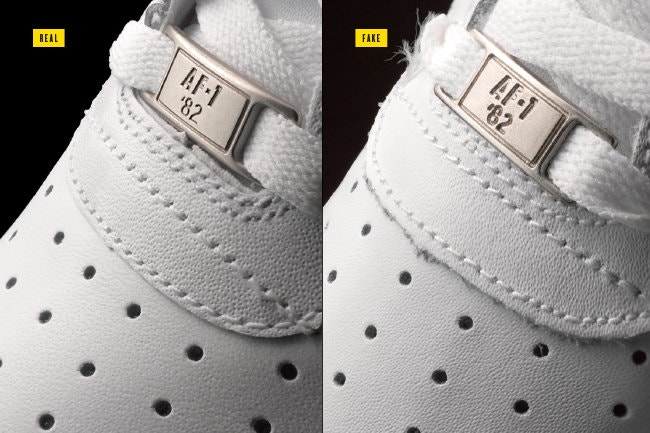
Source: The New York Times
Where were the shoes ordered?
Alongside the large selection of shops selling sneakers, there are also websites offering counterfeit products. At first glance, it may not be obvious that a site is fake. You’d think that with how hard it currently is to run a business, it would be very hard to sell fakes.
Unfortunately, the opposite is true, as the thousands of tricked and disappointed customers confirm every year.
Are you sure your pair comes from a reputable shoe retailer? You can find out how to recognize a store selling fakes a few paragraphs lower.
Price
Does the price seem too good to be true? Unless you’re dealing with a sale on our site, you’d be right to suspect something. The corresponding price of the products should be available on the official website of the seller, or other stores with the same pair.
The world of sneakers has some relatively strict unwritten rules. One is regarding price, and even though it’s already been said in this article, it’s important to go by it – if the price is too good to be true, something isn’t right.
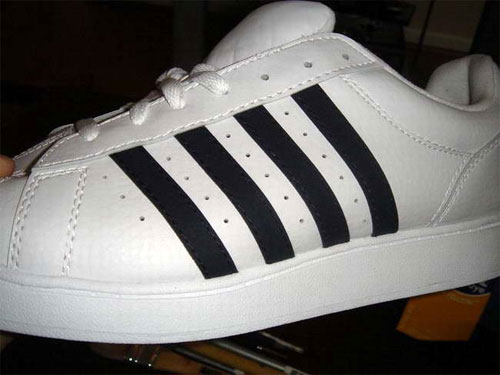
Weight
Visually similar materials can have totally different compositions. The weight of the sneaker can be a clear indicator, in both extremes. Some sneakers are known for their unique lightness, which a counterfeit usually cannot achieve. On the other hand, imitation materials, due to their poor quality, can be much lighter than the real deal, which can also be an indicator.
How to avoid buying fakes?
Shop at verified resellers, who have reviews on several different websites. Even reviews can be manipulated, so look for constructive criticisms in them and pay attention to both the good and bad experiences and read what the problems were. It’s usually a matter of common sense recognizing reviews from real customers as opposed to bots or a few people who are themselves part of the shady business.
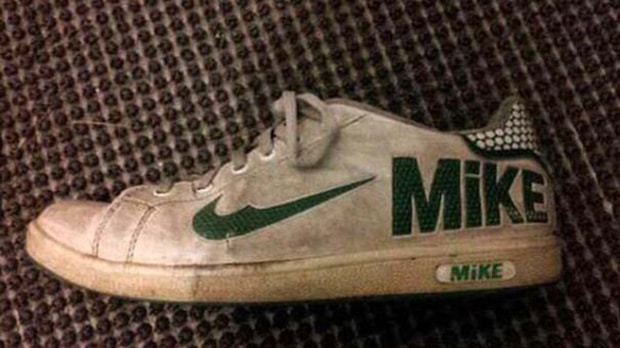
Source: china-mike.com
Verifying authenticity
Sneakers are best verified using a combination of the different procedures we listed above. First of all, the verification of the SKU code, the authenticity of the sticker on the box and the sticker matching the tag on the inside of the shoe.
In many cases, the odor or the surface materials, which is sometimes so specific to different sneakers can also be telling, as it is almost impossible to imitate perfectly.
WHAT TO DO IF I BUY FAKE SHOES?
There aren’t many options. Depending on who the product was purchased from, you can refer to the business conditions, which every store should have available and where the method to return the shoe should be described. Logically, fraudulent businesses do not always have this, and in that case it’s often a lost cause to try. If that is the case, you can use the common forms of communication, to warn other people and protect them from a similarly unfortunate purchase.
A negative review can easily be deleted by the seller, but it’s worth a try, especially if there are multiple sights to leave reviews on. If you feel that justice must be done, contact the relevant authority, which has the power to prohibit or at least make it harder for the fraudulent store to operate.
In the case of a purchase from a reseller, the contracts and legal protection of the buyer are usually not a subject of discussion. If you come across a situation like that, there is nothing better than informing as many people as possible about their shady practices. At the end of the day, there is nothing worse for a businessman than a bad reputation and people’s distrust.
Because enforcing compensation or returns when buying counterfeits is usually impossible, the best thing you can do is read this article very carefully, so you can avoid similar situations in general.
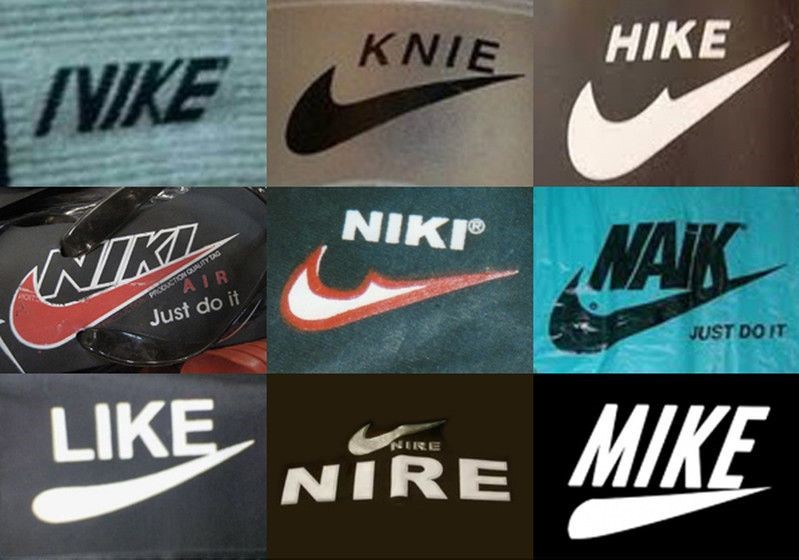
Source: logodix.com
HOW TO RECOGNIZE A STORE WITH FAKE PRODUCTS
Every eshop is different. Not every retailer has access to unusual or limited sneakers. This is due to the necessary long negotiations and fulfilment of conditions related to the business portfolio, its contribution to the culture and market relevance.
In short, this means that if you start a business right now, you definitely can’t start selling leading brand products the very next day, let alone the most limited ones. But how to recognize a fake eshop?
Counterfeit stores rely on the ignorance of the customer. Their products are often not described accurately and lack the necessary specifics. The presentation of the product can also arouse suspicion – it’s pretty easy to recognize a low-quality image or even a stolen one. A fundamental rule to follow is that if the store doesn’t have its own product photos, the risk of buying fakes is higher. Therefore, don’t be afraid to use for example internet reverse image searches.
When choosing a store, look for signs that guarantee authenticity, usually the presence of a warranty card or the retailers business conditions, which must be available on the website – you can try out what it should look like here at Footshop. You can find a detailed analysis of how to recognize a fake store, which also requires some skill with the technical capabilities of the browser, in this article. We want to alert you in advance that the link will redirect you to a different site.
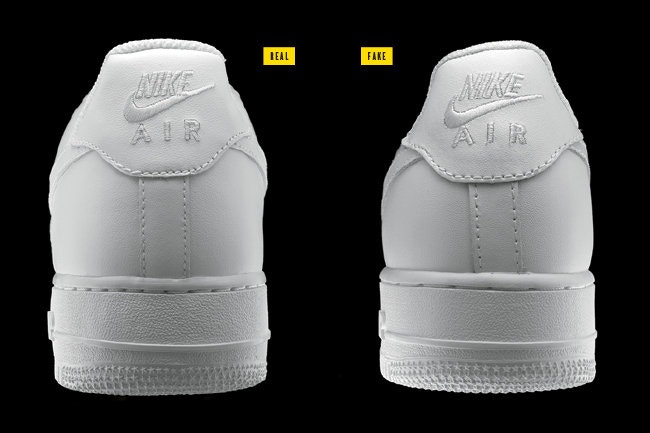
Source: The New York Times
DOES IT MATTER THAT I HAVE FAKE SHOES?
If your values are based primarily on functionality, rather than wowing your audience, you’d expect the answer to be no. Unfortunately, the problem is much bigger.
The black market with counterfeit goods is extremely complex and, especially in poorer areas, is associated with disastrous working conditions, minimal pay and the flooding of the world with fast fashion products, which are environmentally demanding for both production and subsequent circulation.
You could say that similar negative situations can also be attributed to the official factories of large brands. In some cases, this is true, but with the difference that in the case of large corporations, these are regulated processes watched by higher institutions. They oversee the improvement of employee conditions and the overall lowering of the negative impact of the textile industry on the planet. This goes hand in hand with the long-term projects of clothing giants, which, according to annual reports, actually lead to overall improvements of the situation. However, the counterfeit market is dragging the whole industry down, and if people support them, the situation will only improve very slowly.
THE HIDDEN THREAT OF FAKE SNEAKERS
A mere external similarity is only one of more problems. Most branded sneakers are only put into circulation after multiple years of testing technologies, materials and shapes, so that the result is the most ideal possible protection of our feet. In the case of forgeries, similar processes don’t happen, resulting in unstable soles or unhealthy shaping of the shoe, which can lead to health problems, like swelling, bruises, blisters or even sprained ankles.
THREE INDICATORS OF A COUNTERFEIT
Prevention precedes being fooled. Purely by reading an article such as this one, dealing with how to identify a counterfeit, you have the most important part behind you. But if I was to sum up the rules into three basic indicators, they would be as follows:
1. A price that’s too low
2. A suspicious seller
3. Absent guarantees of authenticity
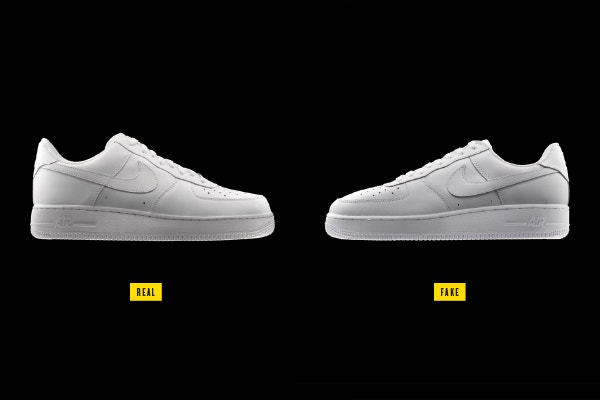
Source: The New York Times
FAQ
How do I recognize a business selling fakes?
The easiest way is the lack of a possibility to return products. Stolen product photos or the absence of product information can also be telling.
How do I recognize fake sneakers?
You can recognize fake sneakers by an unrealistic price, odor, wrong patterns in the materials, poor quality seams or incorrect weight.
How do I return a purchased counterfeit?
Ofte, they cannot be returned. Focus on informing people of your bad experience with the seller.
How do I verify the authenticity of sneakers?
You can do it easily by checking the box and the SKU code. Really accurate counterfeits can be distinguished by smell, patterns in the materials or comparison with the original product.
What is an SKU code?
A SKU code is a unique code for each registered model and its color versions.
Where can I find the SKU code?
You can find it on the shoe box and on the tag inside each shoe.
How can I tell the right price for sneakers?
The price of sneakers is listed on the official website of the brand. If not, compare the price with other sites.
Hopefully everything is clear now. Don’t forget to spread awareness and knowledge about sneakers amongst your friends. Did you know that it’s possible even they’ve owned fake sneakers in the past. You can continue by reading this article, that introduces you to the most common fake sneakers that you or one of your friends may have owned.
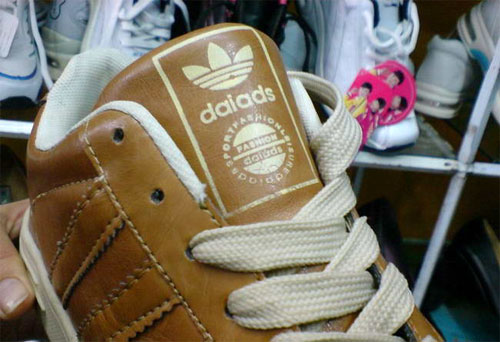
- Summer must burn - 10. 5. 2023
- On Feet: The best sneakers of the week are dominated by New Balance - 4. 5. 2023
- 4 colours of 2023 that define a separate trend category - 5. 4. 2023
